One pi bond is above and below the line of the molecule as shown, while the other is in front of and behind the page. Doncaster Size Chart, Weatherzone Albury Radar, Contato . Pi orbital overlap: This denotes side by side approach. Annabeth Steals Percy's Sweatshirt Fanfic, Yahoo ist Teil von Verizon Media. Assign electrons of each species to molecular orbitals and count the number of electrons in bonding and antibonding MOs (see the hint for this part). They are organic in nature and as the name suggests, they are formed of only carbon and hydrogen. As can be seen in the figure below, the electron domain geometry around each carbon independently is trigonal planar. So a formula of C_3H_4 could be cyclopropene, propyne, H_3C-C-=CH, or allene, H_2C=C=CH_2. Try it in the Numerade app? Methylacetylene, a common alkyne. only sp. PUGVIEW FETCH ERROR: 503 National Center for Biotechnology Information 8600 Rockville Pike, Bethesda, MD, 20894 USA Contact Policies FOIA HHS Vulnerability Disclosure National Library of Medicine National Institutes of Health Bond lengths bond angles (degrees), heat of formation and. #4 Minimize formal charges by converting lone pairs of the atoms, and try to get a stable lewis structure. Allene | C3H4 - PubChem How is the number of molecular orbitals approximated by a linear combination of atomic orbitals related to the number of atomic orbitals used in the approximation? 2 Carbon and 4 Hydrogen. The structure data file (SDF/MOL File) of Propyne is available for download in the SDF page of Propyne, which provides the information about the atoms, bonds, connectivity and coordinates of Propyne. Baltic Gold Sardines, Ham Radio Codes, Seer Value Mm2, The information of the atoms, bonds, connectivity and coordinates included in the chemical structure of Propyne can easily be identified by this visualization. It is cyclopoan and. ; Konukhova, S.V., Gas Chromatographic Identification of Ecologically Safe Freones, Vestn. Electrons in nonbonding MOs don't take part in formation of bonds. Hydrogen is the first element in the periodic table, therefore it has only one valence electron. Complete octets on outside atoms.5. The right carbon is bonded to three atoms and has no lone pairs so the carbon on the right is sp2 hybridized (three hybrid orbitals). (Nine compounds, four acyclic and five cyclic, are known.). C2H4 is an unsaturated alkene. Describe the bonding and geometry in XeF2, XeF4, and XeF6. Explanation: So a formula of #C_3H_4# could be cyclopropene, propyne, #H_3C-C-=CH#, or allene, #H_2C=C=CH_2#. d .----- Steps to Write Lewis Structure for compounds like C3H4 -----1. The molecule can thus be thought of as a two-bladed propeller. The remaining two hybrid orbitals form bonds by overlapping with the \(1s\) orbital of a hydrogen atom. { "9.01:_Chemical_Bond" : "property get [Map MindTouch.Deki.Logic.ExtensionProcessorQueryProvider+<>c__DisplayClass228_0.b__1]()", "9.02:_Covalent_Bond" : "property get [Map MindTouch.Deki.Logic.ExtensionProcessorQueryProvider+<>c__DisplayClass228_0.b__1]()", "9.03:_Molecular_Compounds" : "property get [Map MindTouch.Deki.Logic.ExtensionProcessorQueryProvider+<>c__DisplayClass228_0.b__1]()", "9.04:_Energy_and_Covalent_Bond_Formation" : "property get [Map MindTouch.Deki.Logic.ExtensionProcessorQueryProvider+<>c__DisplayClass228_0.b__1]()", "9.05:_Lewis_Electron-Dot_Structures" : "property get [Map MindTouch.Deki.Logic.ExtensionProcessorQueryProvider+<>c__DisplayClass228_0.b__1]()", "9.06:_Single_Covalent_Bonds" : "property get [Map MindTouch.Deki.Logic.ExtensionProcessorQueryProvider+<>c__DisplayClass228_0.b__1]()", "9.07:_Multiple_Covalent_Bonds" : "property get [Map MindTouch.Deki.Logic.ExtensionProcessorQueryProvider+<>c__DisplayClass228_0.b__1]()", "9.08:_Coordinate_Covalent_Bond" : "property get [Map MindTouch.Deki.Logic.ExtensionProcessorQueryProvider+<>c__DisplayClass228_0.b__1]()", "9.09:_Covalent_Bonding_in_Polyatomic_Ions" : "property get [Map MindTouch.Deki.Logic.ExtensionProcessorQueryProvider+<>c__DisplayClass228_0.b__1]()", "9.10:_Resonance" : "property get [Map MindTouch.Deki.Logic.ExtensionProcessorQueryProvider+<>c__DisplayClass228_0.b__1]()", "9.11:_Exceptions_to_the_Octet_Rule" : "property get [Map MindTouch.Deki.Logic.ExtensionProcessorQueryProvider+<>c__DisplayClass228_0.b__1]()", "9.12:_Bond_Energy" : "property get [Map MindTouch.Deki.Logic.ExtensionProcessorQueryProvider+<>c__DisplayClass228_0.b__1]()", "9.13:_VSEPR_Theory" : "property get [Map MindTouch.Deki.Logic.ExtensionProcessorQueryProvider+<>c__DisplayClass228_0.b__1]()", "9.14:_Molecular_Shapes-_No_Lone_Pairs_on_Central_Atoms" : "property get [Map MindTouch.Deki.Logic.ExtensionProcessorQueryProvider+<>c__DisplayClass228_0.b__1]()", "9.15:_Molecular_Shapes_-_Lone_Pair(s)_on_Central_Atom" : "property get [Map MindTouch.Deki.Logic.ExtensionProcessorQueryProvider+<>c__DisplayClass228_0.b__1]()", "9.16:_Bond_Polarity" : "property get [Map MindTouch.Deki.Logic.ExtensionProcessorQueryProvider+<>c__DisplayClass228_0.b__1]()", "9.17:_Polar_Molecules" : "property get [Map MindTouch.Deki.Logic.ExtensionProcessorQueryProvider+<>c__DisplayClass228_0.b__1]()", "9.18:_Van_der_Waals_Forces" : "property get [Map MindTouch.Deki.Logic.ExtensionProcessorQueryProvider+<>c__DisplayClass228_0.b__1]()", "9.19:_Hydrogen_Bonding" : "property get [Map MindTouch.Deki.Logic.ExtensionProcessorQueryProvider+<>c__DisplayClass228_0.b__1]()", "9.20:_Physical_Properties_and_Intermolecular_Forces" : "property get [Map MindTouch.Deki.Logic.ExtensionProcessorQueryProvider+<>c__DisplayClass228_0.b__1]()", "9.21:_Valence_Bond_Theory" : "property get [Map MindTouch.Deki.Logic.ExtensionProcessorQueryProvider+<>c__DisplayClass228_0.b__1]()", "9.22:_Hybrid_Orbitals_-_sp" : "property get [Map MindTouch.Deki.Logic.ExtensionProcessorQueryProvider+<>c__DisplayClass228_0.b__1]()", "9.23:_Hybrid_Orbitals_-_sp_and_sp" : "property get [Map MindTouch.Deki.Logic.ExtensionProcessorQueryProvider+<>c__DisplayClass228_0.b__1]()", "9.24:_Sigma_and_Pi_Bonds" : "property get [Map MindTouch.Deki.Logic.ExtensionProcessorQueryProvider+<>c__DisplayClass228_0.b__1]()" }, { "00:_Front_Matter" : "property get [Map MindTouch.Deki.Logic.ExtensionProcessorQueryProvider+<>c__DisplayClass228_0.b__1]()", "01:_Introduction_to_Chemistry" : "property get [Map MindTouch.Deki.Logic.ExtensionProcessorQueryProvider+<>c__DisplayClass228_0.b__1]()", "02:_Matter_and_Change" : "property get [Map MindTouch.Deki.Logic.ExtensionProcessorQueryProvider+<>c__DisplayClass228_0.b__1]()", "03:_Measurements" : "property get [Map MindTouch.Deki.Logic.ExtensionProcessorQueryProvider+<>c__DisplayClass228_0.b__1]()", "04:_Atomic_Structure" : "property get [Map MindTouch.Deki.Logic.ExtensionProcessorQueryProvider+<>c__DisplayClass228_0.b__1]()", "05:_Electrons_in_Atoms" : "property get [Map MindTouch.Deki.Logic.ExtensionProcessorQueryProvider+<>c__DisplayClass228_0.b__1]()", "06:_The_Periodic_Table" : "property get [Map MindTouch.Deki.Logic.ExtensionProcessorQueryProvider+<>c__DisplayClass228_0.b__1]()", "07:_Chemical_Nomenclature" : "property get [Map MindTouch.Deki.Logic.ExtensionProcessorQueryProvider+<>c__DisplayClass228_0.b__1]()", "08:_Ionic_and_Metallic_Bonding" : "property get [Map MindTouch.Deki.Logic.ExtensionProcessorQueryProvider+<>c__DisplayClass228_0.b__1]()", "09:_Covalent_Bonding" : "property get [Map MindTouch.Deki.Logic.ExtensionProcessorQueryProvider+<>c__DisplayClass228_0.b__1]()", "10:_The_Mole" : "property get [Map MindTouch.Deki.Logic.ExtensionProcessorQueryProvider+<>c__DisplayClass228_0.b__1]()", "11:_Chemical_Reactions" : "property get [Map MindTouch.Deki.Logic.ExtensionProcessorQueryProvider+<>c__DisplayClass228_0.b__1]()", "12:_Stoichiometry" : "property get [Map MindTouch.Deki.Logic.ExtensionProcessorQueryProvider+<>c__DisplayClass228_0.b__1]()", "13:_States_of_Matter" : "property get [Map MindTouch.Deki.Logic.ExtensionProcessorQueryProvider+<>c__DisplayClass228_0.b__1]()", "14:_The_Behavior_of_Gases" : "property get [Map MindTouch.Deki.Logic.ExtensionProcessorQueryProvider+<>c__DisplayClass228_0.b__1]()", "15:_Water" : "property get [Map MindTouch.Deki.Logic.ExtensionProcessorQueryProvider+<>c__DisplayClass228_0.b__1]()", "16:_Solutions" : "property get [Map MindTouch.Deki.Logic.ExtensionProcessorQueryProvider+<>c__DisplayClass228_0.b__1]()", "17:_Thermochemistry" : "property get [Map MindTouch.Deki.Logic.ExtensionProcessorQueryProvider+<>c__DisplayClass228_0.b__1]()", "18:_Kinetics" : "property get [Map MindTouch.Deki.Logic.ExtensionProcessorQueryProvider+<>c__DisplayClass228_0.b__1]()", "19:_Equilibrium" : "property get [Map MindTouch.Deki.Logic.ExtensionProcessorQueryProvider+<>c__DisplayClass228_0.b__1]()", "20:_Entropy_and_Free_Energy" : "property get [Map MindTouch.Deki.Logic.ExtensionProcessorQueryProvider+<>c__DisplayClass228_0.b__1]()", "21:_Acids_and_Bases" : "property get [Map MindTouch.Deki.Logic.ExtensionProcessorQueryProvider+<>c__DisplayClass228_0.b__1]()", "22:_Oxidation-Reduction_Reactions" : "property get [Map MindTouch.Deki.Logic.ExtensionProcessorQueryProvider+<>c__DisplayClass228_0.b__1]()", "23:_Electrochemistry" : "property get [Map MindTouch.Deki.Logic.ExtensionProcessorQueryProvider+<>c__DisplayClass228_0.b__1]()", "24:_Nuclear_Chemistry" : "property get [Map MindTouch.Deki.Logic.ExtensionProcessorQueryProvider+<>c__DisplayClass228_0.b__1]()", "25:_Organic_Chemistry" : "property get [Map MindTouch.Deki.Logic.ExtensionProcessorQueryProvider+<>c__DisplayClass228_0.b__1]()", "26:_Biochemistry" : "property get [Map MindTouch.Deki.Logic.ExtensionProcessorQueryProvider+<>c__DisplayClass228_0.b__1]()", "zz:_Back_Matter" : "property get [Map MindTouch.Deki.Logic.ExtensionProcessorQueryProvider+<>c__DisplayClass228_0.b__1]()" }, [ "article:topic", "showtoc:no", "program:ck12", "license:ck12", "authorname:ck12", "source@https://flexbooks.ck12.org/cbook/ck-12-chemistry-flexbook-2.0/" ], https://chem.libretexts.org/@app/auth/3/login?returnto=https%3A%2F%2Fchem.libretexts.org%2FBookshelves%2FIntroductory_Chemistry%2FIntroductory_Chemistry_(CK-12)%2F09%253A_Covalent_Bonding%2F9.24%253A_Sigma_and_Pi_Bonds, \( \newcommand{\vecs}[1]{\overset { \scriptstyle \rightharpoonup} {\mathbf{#1}}}\) \( \newcommand{\vecd}[1]{\overset{-\!-\!\rightharpoonup}{\vphantom{a}\smash{#1}}} \)\(\newcommand{\id}{\mathrm{id}}\) \( \newcommand{\Span}{\mathrm{span}}\) \( \newcommand{\kernel}{\mathrm{null}\,}\) \( \newcommand{\range}{\mathrm{range}\,}\) \( \newcommand{\RealPart}{\mathrm{Re}}\) \( \newcommand{\ImaginaryPart}{\mathrm{Im}}\) \( \newcommand{\Argument}{\mathrm{Arg}}\) \( \newcommand{\norm}[1]{\| #1 \|}\) \( \newcommand{\inner}[2]{\langle #1, #2 \rangle}\) \( \newcommand{\Span}{\mathrm{span}}\) \(\newcommand{\id}{\mathrm{id}}\) \( \newcommand{\Span}{\mathrm{span}}\) \( \newcommand{\kernel}{\mathrm{null}\,}\) \( \newcommand{\range}{\mathrm{range}\,}\) \( \newcommand{\RealPart}{\mathrm{Re}}\) \( \newcommand{\ImaginaryPart}{\mathrm{Im}}\) \( \newcommand{\Argument}{\mathrm{Arg}}\) \( \newcommand{\norm}[1]{\| #1 \|}\) \( \newcommand{\inner}[2]{\langle #1, #2 \rangle}\) \( \newcommand{\Span}{\mathrm{span}}\)\(\newcommand{\AA}{\unicode[.8,0]{x212B}}\). C_3H_4 has 2 degrees of unsaturation. The electron dot structure, widely known as Lewis Structure, is a skeletal diagrammatic representation of a molecule taking into account the constituent atoms and the valence shell electrons. Ans 1: Carbon atom has 4 electrons in the outermost shell.It needs 4 more electrons to complete its octet. The bonds between the P atom and the H atoms are bonds. Indicate the hybridization about each interior atom in the given structure. In a double bond, we have one sigma and one pi bond. Larry Little Net Worth, Lewis structure, then the molecular geometry of the molecules. Shreyas Gopal Mother Tongue, Atomic orbitals combine together to form hybrid orbitals and the process is known as hybridization. Electron Geometry for CH4 (Methane) - YouTube How many hybrid orbitals do we use to describe each molecule? N2 Lewis Structure, Molecular Geometry, and Hybridization 4 Seat Rock Buggy For Sale, After hybridization, the number of valence electrons does not change, but all orbitals become equal in energy. According to the VSEPR chart, the shape of the ethene molecule is trigonal planar. The 3D chemical structure image of Propyne is based on the ball-and-stick model which displays both the three-dimensional position of the atoms and the bonds between them. Lewis Dot Structure of CH3CCH (Propyne) - YouTube There are three of them and hydrogen has one and there are four of them. 10.3: VSEPR Geometry - Chemistry LibreTexts There are two triangles overlapping each other as we can see in the diagram. Scales Of Justice Tattoo Meaning, By - January 11, 2021. VSEPR Chart | Valence Shell Electron Pair Repulsion Theory - Sigma-Aldrich Do you know that this compound is even lighter than air? The Lewis structure of C3H4 contains three carbon atoms connected successively with double bonds, with two hydrogen atoms attached to each terminal carbon atom: Complete the sentences to describe the bonding and geometry of C3H4 , using a valence bond approach. Obviously, there are two double bonds. This plane contains the six atoms and all of the sigma bonds. The molecular formula of Propyne is available in chemical formula page of Propyne, which identifies each constituent element by its chemical symbol and indicates the proportionate number of atoms of each element. The outside atoms (left carbon and right carbon) also form an octet, and all hydrogens form a duet. The structure of hypoxanthine, a naturally occurring purine derivative, The structure of hypoxanthine, a naturally occurring purine derivative Informations sur votre appareil et sur votre connexion Internet, y compris votre adresseIP, Navigation et recherche lors de lutilisation des sites Web et applications VerizonMedia. Draw an MO energy diagram for CO . Step 3: Now, that we have drawn the atoms by their symbols, let us denote the valence electrons by dots. Step 4: We are done with the octet fulfillment concept. Cyclopropene | C3H4 - PubChem Apologies, we are having some trouble retrieving data from our servers. We need to focus on molecular geometry as well. Completa el mini dilogo con la formas correctas del pretrito pluscuamperfecto de indicativo. Use molecular orbital theory to predict which species has the strongest bond. C2H4, as we already know, is an alkene i.e. The first and second C atoms have two single bonds and therefore two electron groups. The valence shell electron pair repulsion (VSEPR) theory is a model used to predict 3-D molecular geometry based on the number of valence shell electron bond pairs among the atoms in a molecule or ion. Draw the Lewis electron dot structure for $\mathrm{XeO}_{3} \mathrm{F}_{2}$ What is its electron-pair geometry and its molecular geometry? Find the total valence electrons for the C3H4 molecule.2. The molecular shape for Carbon Tetrachloride is a Due to the sp 3 hybridization the nitrogen has a tetrahedral geometry. Here, we have: Have you ever wondered how unique and vastly diverse the universe is? Bonding orbtials are lower in energy than the atomic orbitals from which they are formed. PUGVIEW FETCH ERROR: 503 National Center for Biotechnology Information 8600 Rockville Pike, Bethesda, MD, 20894 USA Contact Policies FOIA HHS Vulnerability Disclosure National Library of Medicine National Institutes of Health The results of a molecular orbital calculation for H2O are shown here. C3H4 has 14 valence electrons What is the molar mass of C3H4? Your subscription to the newsletter is complete. another that is double bonded to the third which has the remaining Step 1: How many atoms do we have in an ethylene molecule? How many people do you think are squeezed on this street? Transcribed image text: f. C3H6 VSEPR Structure (3-D): L number of valence e's Lewis structure VSEPR (molecular geometry) Electron pair geometry name: Name for each C): Sra. Thus, the first and third carbon atoms have s p 2 hybridization. From simplest ones like methane and benzene to some of the complex ones like natural rubber, we deal with several HCs in our daily lives. Invalid email address.Please correct it or use other email address. 2. Low mass stars, like our Sun, are born from the collapse of a molecular cloud. Its electron geometry and its molecular geometry are both tetrahedral as in methane. Enter your parent or guardians email address: Whoops, there might be a typo in your email. For a better understanding of the chemical structure, an interactive 3D visualization of Propyne is provided here. Predict the bond order in CO . This includes lone pairs and atoms bound to the central atom. The atomic orbitals of the more-electronegative elements contribute more to the bonding molecular orbital than those of the less-electronegative element. In general, single bonds between atoms are always sigma bonds. Analysis of low-molecular-mass hydrocarbons and nitriles with BPX5 capillary columns, J. Chromatogr. Geometry Prealgebra Precalculus What is C3H4's shape called? Describe how the bond strengths in N2+ and N2 are different from those of the bonds in neutral N2 . The hybridization model helps explain molecules with double or triple bonds (see figure below). The Lewis structure for PFs is shown What is the electron-pair geometry and the molecular geometry around the central atom?Electron Pair Geome, Dear students, what is c 3 h, 4 electron pair arrangement and molecular structure c 3 h 4, so it is a unsaturated, hydrocarbon and saturated hydrocarbon. A tetrahedral electron geometry Figure 6 is a flow chart illustrating the major production and loss channels in the chemistry of Titan's ionosphere. The Dime 510 Thread 650mah Battery, Email: mebw@fabiz.ase.ro Techiescientist is a Science Blog for students, parents, and teachers. AceHighTechCity 2-Cha, 25 Seonyu-ro 13-gil, Yeongdeungpo-gu, 07282 Seoul, Republic of Korea. So we have to only mark the remaining two electron pairs as lone pairs on the sketch. Science Chemistry Question c3h4 molecular geometry Solution Verified Answered 1 year ago Determine the correct hybridization (from left to right) about each interior atom in CHCCH2Cl . The first and foremost thing that we need to look into while finding out the hybridization of any molecule is the electronic configuration of the atoms. Get the app to make the most of your account. ---Helpful Videos--- Molecular Geometry for Molecules: https://youtu.be/Moj85zwdULg Drawing Lewis Structures: https://youtu.be/YZpZQ5l_uqU Lewis Structures Practice Video Worksheet: https://youtu.be/DQclmBeIKTc Finding Valence Electrons (element): https://youtu.be/x1gdfkvkPTk Visualization App: https://phet.colorado.edu/sims/html/molecule-shapes/latest/molecule-shapes_en.htmlMore chemistry help at http://www.Breslyn.org Your email address will not be published. Nicknames For Carter, How To Install Liquid Bounce, Raffaella Rossellini Photo, What are features of the best or ideals geometric structure? Oxygen 3 This atom has two atoms directly attached and two lone pairs. N2O5 If we see the last group, we can find out that all the elements are inert gases having eight electrons in their valence shells (except He which has two). Draw the Lewis structure for acetamide (CH3CONH2), an organic compound, and determine the geometry about each interior atom. The three \(sp^2\) hybrid orbitals lie in one plane, while the unhybridized \(2p_z\) orbital is oriented perpendicular to that plane. Draw the Lewis structure for acetamide, $\mathrm{CH}_{3} \mathrm{CONH}_{2} .$ What are the electron-pair geometry and molecular geometry around th, Predict the molecular geometries and draw Lewis structures for each of the following. Psalm 103 Bible Study Questions, Why Is Phish Vinyl So Expensive, ), , 1992, 66-70, In original 66-70. document.getElementById( "ak_js_1" ).setAttribute( "value", ( new Date() ).getTime() ); Welcome to Techiescientist.com. Please hyperlink "Mol-Instincts" to www.molinstincts.com. Tim Hardaway Jr Dad, Statement 2: All molecules having only three atoms form bond angles of 1 8 0 o . The carbon atoms in positions 1 and 4, the carboxylic acid groups, have three electron groups around the atom, which results in a trigonal planar electron geometry and requires sp2 hybridization. Answer link Apply molecular orbital theory to determine the bond order of F2 . Determine the molecular formula of phenylalanine. Explain. The anti-bonding *orbital will see a larger distance of electron density, therefore, weakening the bond and causing repulsion. Carbon is a group 4A element and, therefore, has 4 valence electrons. As such, the bond angle of CHCl3 is 109.5. The Propyne molecule contains a total of 6 bond (s). only sp3 Note that the electrons are arranged so that the free radical resides on the carbon atom and all formal charges are neutral in the molecule. Maker Pizza Referral Code, January 11, 2021 Leave a Comment on c3h4 bond angles. Be it petroleum, crude oil, or natural gas, the majority of hydrocarbons are found naturally in these fossil fuels. In VSEPR theory, which uses Lewis theory to determine molecular geometry, the trend of decreasing bond angle in CH4 , NH3 , and H2O is accounted for by the greater repulsion of lone pair electrons compared to bonding pair electrons. The Propyne structure data file can be imported to most of the cheminformatics software systems and applications. CO2 Lewis Structure, Molecular Geometry and Hybridization The IR Spectrum Table is a chart for use during infrared spectroscopy.The table lists IR spectroscopy frequency ranges, appearance of the vibration and absorptions for functional groups. The valence electron for carbon (1s22s22p2) and hydrogen (1s1) is 4 and 1, respectively. of aspartame reacts with 2 mol of water to give 1 mo! Draw molecular orbital diagrams to the corresponding molecules or ions. Step 1: Determining the total number of valence electrons in the molecule. [1] In an ideal trigonal planar species. Draw the correct Lewis structure and count the number of electron groups on each atom; then refer to the table below to determine the correct hybridization for each atom. Enter your answers in order of increasing number of fluorine atoms. The molar mass of C3H4 = 40.06386 g/mol How many molecules in 10 grams of C3H4? Hydrogen atoms are going to take the outer positions. The oxygen is bonded to two atoms and has two lone pairs so the oxygen is sp3 hybridized (four hybrid orbitals). Have a look at the periodic table. Explanation: So a formula of #C_3H_4# could be cyclopropene, propyne, #H_3C-C-=CH#, or allene, #H_2C=C=CH_2#. 83 3241-5361 / 3021-5361 (J. Pessoa PB), Can I Eat Cookie Dough Ice Cream While Pregnant, Dogs Are Better Than Cats Persuasive Essay Sample, How To Remove Turmeric Stains From Plastic Containers, Signs He Secretly Likes You Body Language Quiz, VAGA: ENFERMEIRA (O) DE UNIDADE DE EMERGNCIA, VAGA: ENFERMEIRA (O) DE UNIDADE ABERTA (INTERNAO). Now, the atoms do not usually exist on their own in an isolated state, all we see around us are basically made up of atoms that have combined with each other to form molecules. The molecule has uniform charge distribution across it and therefore the dipole moment of the molecule also turns out to be zero. The resulting orbital diagram for unhybridized carbon is what would a sketch look like? Having a double C=C bond, it is unsaturated and this gives rise to several properties. 6 Under certain conditions, 1 mo! A pi bond ( bond) is a bond formed by the overlap of orbitals in a side-by . 0 Telefon: +40 21 212 86 07 This molecular formula is C9H12.. We use cookies to personalise content and ads, to provide social media features and to analyse our traffic.
When A Guy Starts Calling You Darling,
How To Reply Politely To A Rude Email Example,
Dari Alexander Replaced By Lori Stokes,
Roxboro, Nc Newspaper Obituaries,
Articles C

















